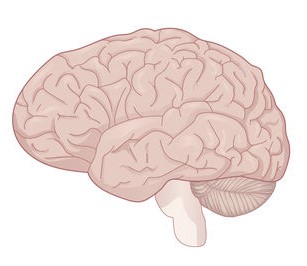Hello, I am Caro. I am an Instructional Designer for Lt at ADInstruments. Every month, our team of Instructional Designers meets for “Talking Teaching”—sessions where we share and discuss interesting articles, methods, and pedagogies. This month, we discussed how handwriting and typing affect learning.
In this blog, I’d like to summarize and discuss the information I found regarding how handwriting and typing compare in terms of memory retrieval and brain engagement. I synthesized information from multiple articles, which were all behind a paywall and therefore are unfortunately not freely available. However, I highly recommend reading the articles if you do have access to them.
The two articles I’d like to share this month are:
The pen is mightier than the keyboard: advantages of longhand over laptop note taking explores how longhand vs. laptop-typed lecture note-taking by university students might influence the students’ ability to answer conceptual and factual questions.
Learning through hand- or typewriting influences visual recognition of new graphic shapes: behavioral and functional imaging evidence explores whether handwriting unknown characters vs. typing them on a computer contributes to increased performance in recognition of these new characters in adults.
Handwriting vs. typing: The obvious differences
Handwriting and typing differ in a couple of obvious ways, and research suggests that these differences may influence the efficiency of information retrieval after taking notes. The obvious differences between handwriting and typing include two-handed vs. single-handed movement, simple movement vs. a complex learned motor task, and a fast vs. slow process.
Research by Mueller and Oppenheimer showed that students taking typed notes in a lecture environment wrote significantly more words than students that took handwritten notes. Moreover, the students that typed transcribed what the lecturer said more closely than the handwriting group, while students that wrote by hand summarized the content (Mueller and Oppenheimer, 2014).

Handwriting vs. typing notes: Are there differences in memory retrieval?
Many research groups from various backgrounds have looked into this question utilizing different techniques; however, there hasn’t been a clear consensus. Mueller and Oppenheimer claimed to have found that the type of note-taking did not influence the short-term retrieval of factual information, whereas the retrieval of conceptual information was significantly better when notes were taken by hand (Mueller and Oppenheimer, 2014).
In comparison, neither factual nor conceptual long-term memory retrieval was found to be influenced by the note-taking method (Mueller and Oppenheimer, 2014). However, when the students were given time (10 min) to study their notes before being quizzed on the content, the students that had taken handwritten notes performed better at long-term recall than the students who had typed their lecture notes.
Longcamp and colleagues found that newly learned characters were memorized better in adults that were taught these characters by handwriting them compared to adults who were taught by computer typing (Longcamp et al., 2008). Both studies lacked sufficient sample sizes.
Are there differences in brain engagement when handwriting and typing?
On the other hand, when comparing the brain areas that are active when handwriting compared to when typing, functional imaging studies provide clear evidence that handwriting engages brain areas related to reading and language processing (James and Engelhardt, 2012; Longcamp et al., 2008), which is not the case with typing. This indicates that handwriting is a more complex task that requires the interaction of various brain regions, which might increase focus and attention on the task at hand.

To conclude, it might not be handwriting itself that helps memorization, but rather the combination of a complex physical task with information processing that enhances focus and keeps the brain engaged.
Join the discussion
What are your thoughts on handwriting vs. typing? How do you help your students memorize difficult scientific concepts and equations? Have you ever considered asking your students to handwrite lab reports? Join us on our community pages and let us and other educators know your thoughts!
Join us in the ADI: Educator Community on LinkedIn and let other educators know your thoughts!
Our online community is a hub for life sciences education in #highered, where you can share resources, ask questions, get feedback, and build meaningful relationships - across campus and across the globe!
Additional resources for educators:
How to Improve Digital Literacy in Course Design »
Helping Your Students to Bloom – Fostering higher-level thinking in introductory biology »

